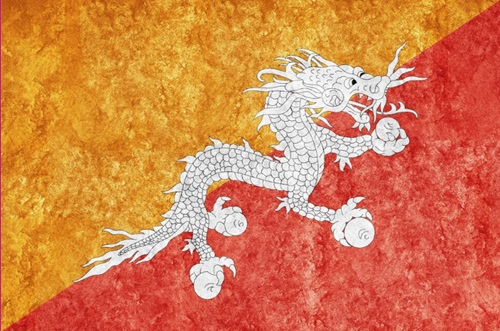
Most people going to Bhutan often wonder what sightseeing there is to do, other than the Tiger’s Nest Monastery and Punakha Dzong. Naturally, these 2 popular attractions are on this list, but we added some other must visit places to cater to a range of interests.
Here’s a definitive list of top 13 places to see in Bhutan. These can be visited throughout the seasons so you won’t have to worry about missing out if you’re travelling during the low season.
1. The Tiger's Nest Monastery
Could we start the list of Bhutan tourist places with anything else?! Yes, we know. You’ve seen the pictures on people's Facebook as their profile picture, cover picture, on Instagram and magazines. Basically on every promotional Bhutan picture ever.
Some background information: A long, long time ago (8th century to be exact) Guru Rinpoche flew on the back of a tiger to this location from Tibet and spent 3 years, 3 months, 3 weeks, 3 days and 3 hours meditating in a cave around the vicinity.
The temple complex aka Tiger’s Nest aka Paro Taktsang aka Taktsang Phalpug Monastery was subsequently built in the 17th century.
Well if we give everything away now, your guide will have nothing to tell you while you ascend 10,000 ft to see this architectural wonder so we’ll leave you with this: No matter how many times you’ve seen it anywhere else, the awesomeness that it is will be magnified when you see it in person.
It’s THE cultural icon of Bhutan. That’s why it’s #1 on this list.
2. National Memorial Chorten

Any visit to Thimphu would be incomplete without dropping by one of Thimphu’s most iconic monuments. Find your inner zen at this Tibetan-style chorten (seat of faith), built as a memorial to the Third King, Jigme Dorji Wangchuck.
Expect to see locals circumambulating this memorial throughout the day (they move in a clockwise direction; in case you want to join in). Even non-Buddhists can appreciate the chorten for its architecture, intricate artwork, elaborate mandalas and sculptures.
The serene atmosphere of the chorten is suitable for meditation, if you’d like to seek a moment of inner peace. Give the prayer wheel a spin before you leave, it is believed to purify negativity, generate compassion and bring peace to all sentient beings.
3. Dochula Pass
If there was a popularity contest for the most famous places to visit in Bhutan, Dochula Pass would win it hands down. A mountain pass located on the road from Thimphu to Punakha, we strongly suggest getting out of the car for the view.
On a clear day, expect stunning views of snowcapped peaks on the Himalayan mountain range (perfect time to use the Panorama function on your camera phone!)
Get up close and personal with 108 memorial chortens (stupas) built by Ashi Dorji Wangmo Wangchuk, the eldest Queen Mother, to commemorate the fallen soldiers in a 2003 battle against Assamese insurgents.
While you’re there, check out the Druk Wangyal Lhakhang (temple), constructed in honour of the much loved and revered Fourth King, Jigme Singye Wangchuck.
4. Chelela Pass
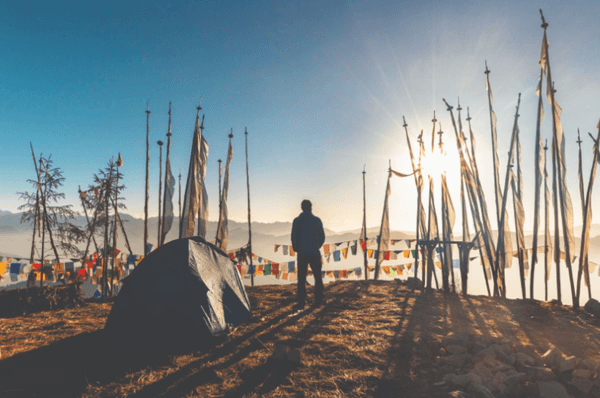
While we’re on the topic of mountain passes, we thought we’d throw in another awesome mountain pass, Chelela Pass. It’s the highest motorable road in Bhutan, so if you have a fear of heights, don’t look down! A 2-hour drive from Paro, travellers typically pass Chelela on their way to the valley of Haa.
If you have no intention of climbing Mount Jomolhari but want to sneak a peek at its mighty peak, this is one of the best places for a view.
While you’re there, take a minute, close your eyes, breathe in the fresh mountain air and with the clouds below you, it’s easy to feel like you’re on top of the world! If you’re not into that kinda thing, you can sit down and have a picnic.
5. Punakha Dzong
The mother of all dzongs in the land of the Thunder Dragon. They don’t call Punakha Dzong the most beautiful dzong in the country and one of the best tourist attractions in Bhutan (some would say world) for nothing.
A structure foretold by Guru Rinpoche, many momentous occasions have been celebrated here, from the crowning of all of Bhutan’s kings, the country’s first national assembly and the royal wedding in 2011.
It remains the winter residence of the monk body, led by the Je Khenpo (Chief Abbot). The preserved remains of Zhabdrung Ngawang Namgyal, the unifier of Bhutan, lie within these hallowed walls.
Punakha Dzong’s imposing grandeur can only be appreciated up close, and on a bright sunny day, it’s a sight for sore eyes.
6. National Institute For Zorig Chusum
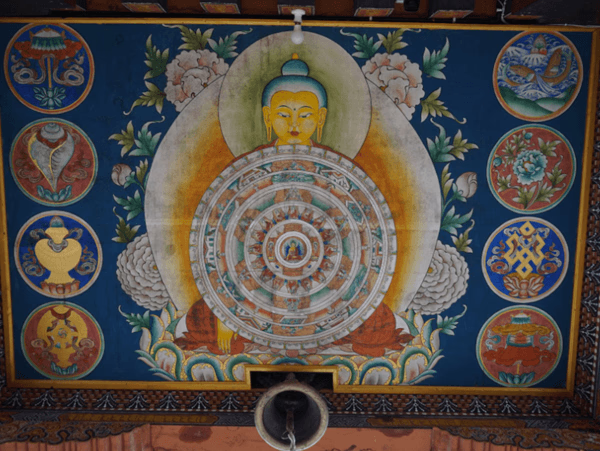
The National Institute for Zorig Chusum is a centre for training in the Bhutanese traditional arts and crafts. They strive to preserve local art by reviving and sustaining traditional methods.
This institute trains young local artisans for 4-6 years in the 13 traditional arts of Bhutan: woodwork, woodturning, stonework, blacksmithing, carving, sculpting, casting, ornament making, paper making, bamboo work, painting, weaving, tailoring, embroidery and applique. *Phew* That's a lot.
Get to see all these various arts in action, and interact with the students in their classrooms as they work on their pieces. There’s a showroom selling pieces made by the students if you feel you can’t leave without buying something.
7. Punakha Ssuspension Bbridge
If you think “men build too many walls and not enough bridges,” head to Bhutan’s longest suspension bridge and prove yourself wrong!
Spanning 350m above the Po Chhu river with prayer flags fluttering serenely by the side, you’re sure to get a mini adrenaline rush standing at the halfway point of Punakha Suspension Bridge. Looking down at the swift waters beneath you will surely make you say “that view though”. Punakha Valley will look like a postcard from where you stand.
8. Royal Textile Aacademy
Bhutanese are extremely proud of their national dress, the Gho and Kira and the Royal Textile Academy was set up in 2005 with the aim of promoting textile arts in Bhutan under the patronage of Her Majesty Ashi Sangay Choden Wangchuck (Queen Mother)
The academy consists of the textile museum, the weaving centre, the conservation centre and the culture heritage centre.
Thagzo (weaving) is an integral part of Bhutanese culture and apart from trying to preserve and promote this art, the Royal Textile Academy trains locals in the art of weaving to help contribute to a sustainable livelihood.
See some of the nation’s finest masterpieces up close and get the chance to sit in on some of the school’s classes when visiting these Bhutan tourist places.
9. Centenary Farmers Market
What better way to experience Bhutanese culture than a visit to their friendly neighbourhood farmers market? Located close to the Coronation Park below the main town, the Centenary Farmers Market underwent refurbishment during the COVID-19 pandemic.The market was inaugurated on 18 September 2023 after remaining closed for more than a year.
It’s the largest domestic market in Bhutan, so be ready to feast your senses. Expect to see local fruits and vegetables, dairy, dried food, poultry, meat and even a section for incense. Offering a diverse array of fresh, locally-sourced produce such as fruits, vegetables, grains, and dairy products, the market is a true embodiment of Bhutanese flavors and traditions. Unlike the previous farmers' market, it now has a stage for recreational activities and an exhibition hall for showcasing artwork.
Bhutan is actually the only country in the world that has pledged to go fully organic by 2020 so this is your chance to meet the farmers at the heart of this movement and interact with friendly locals doing their weekly shopping.
10. Buddha Dordenma Statue
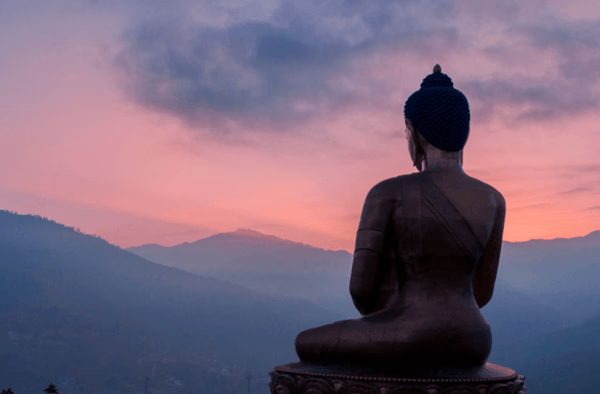
If you’re seeking enlightenment, we can’t give you many pointers but we can point you in the direction of a statue of one of the most enlightened beings of all time.
Known among locals as Buddha Point, the Buddha Dordenma Statue is one of the largest Buddha statues in the world at a height of 51.5m. Within the statue lies another 125,000 smaller Buddha statues which is one of the most recommended places to see in Bhutan.
Located atop the Kuensel Phodrang Nature Park, Buddha Point overlooks the southern entrance to Thimphu. Take a moment to appreciate the peace and beauty of the Thimphu valley with Buddha (125, 001 of them) over your shoulder. Look out for the lights illuminating the statue at night, it’s quite a sight to behold.
For regular tips from your friendly Bhutan travel experts, sign up to our newsletter at drukasia.com or if you have any enquiries, drop us an email here: help@drukasia.com
11. Zuri Dzong Hike
The peak of the Zuri Dzong Trek is probably the perfect spot to have a bird-eye view of the entire Paro valley. The Zuri Dzong is the oldest Dzong in Bhutan, and in there lies a cave where Buddha came to meditate in, in the 8th century.
Zuri Dong is a peaceful place that allows both local Bhutanese and tourists to soak in the tranquil that radiates from the extraordinary view, something one can stare at for hours in wonder and awe.
The total journey time to get there will take approximately 30 minutes if one starts from the museum watchtower, and an additional 1 hour to exit out towards Uma. Tourists can expect to sit and relax there, and also remember to catch the amazing side view as you hike through Trek.
12. COMO Uma Paro Hotel
Just a 10 minutes drive from Paro airport, COMO Uma Paro Hotel perches proudly on a Himalayan mountain, flanked by thick pine forests with views that overlay the Paro district.
One of the remote kingdom’s only boutique hotels, it offers elegant interiors, exquisite food, a pampering Como Shambhala spa and a cool pool amid the mind-bending ravishing scenery.
You could lose hours just mesmerising at the magical Himalayan landscape. The rooms available specialise in different sceneries and needs for every individual’s preference, such as:
-
Forest view rooms, overlooking the surrounding pine forests.
-
Valley view rooms, offering panoramic views of the Paro Valley.
-
Como suites, with 180-degree views of the Paro Valley in the bedroom, a kitchenette, a sitting, dining and study area.
-
One-bedroom villas, which are spacious freestanding villas that include a sitting area with a traditional Bukhari wood burning stove, as well as a private spa treatment area. (Both villas offer personal butler services)
-
Two-bedroom villas come with a living area with panoramic views of the Paro Valley with an open-air courtyard with a fire pit. The villas provide an outdoor hot-stone bathtub, a private spa treatment and offer Personal butler services.
13. Gangtey Valley In Winter
The valley of Gangtey is one of the most stunning valleys in the Himalayas, and many call it the Shangri-La of Bhutan, just as how Bhutan is well known for being “one of the world’s happiest nations,” and “the last Shangri-La on Earth.”
The surprise of finding such a wide, flat valley without any trees after the hard climb through dense forests is augmented by an impression of vast space, which is an extremely rare experience in Bhutan as most of the valleys are tightly enclosed.
The trek visits the villages of Gogona and Khotokha, passing through meadows and fields, then forests of juniper, magnolia and rhododendrons, which will be in full bloom in April.
Besides the attractive scenic valley and mountain trails passing through the magnificent forest with its undergrowth changing from rhododendron and magnolia to ferns and dwarf bamboo, you can also visit the historical Gangtey monastery and the blacked necked crane information centre.
Also, there is a special treat for those visiting the Gangtey during the winter season, as they will be able to catch the graceful Black-necked Cranes in action as they head to the roost.
More Things To Do In Bhutan
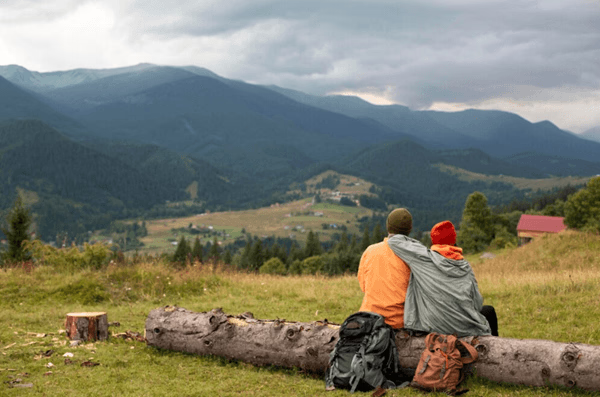
Experience Bhutanese Cuisine
No visit to Bhutan is complete without tasting Bhutanese cuisine. Enjoy traditional dishes like Ema Datshi (chilli and cheese stew), Phaksha Paa (pork with red chillies) and momos (dumplings). Visiting local markets and dining at traditional restaurants will enhance your culinary experience.
Learn Traditional Bhutanese Arts and Crafts
Bhutan is renowned for its intricate arts and crafts, such as weaving, thangka painting and pottery. You can visit craft schools or local workshops to see artisans at work and even take part in hands-on classes. Learning a traditional Bhutanese craft can be a rewarding and immersive cultural experience.
Take A Bhutanese Cooking Class
Delve deeper into Bhutanese culture by learning to cook traditional dishes. Many hotels and culinary schools offer cooking classes where you can learn to prepare Bhutanese staples like Ema Datshi (chilli and cheese stew), Jasha Maru (spicy chicken) and various types of dumplings.
This experience not only teaches you about Bhutanese cuisine but also allows you to take a piece of Bhutan home with you.
Join A Meditation Session
Bhutan, known for its serene landscapes and peaceful atmosphere, is an ideal place for meditation. Many monasteries and retreat centres offer meditation sessions guided by experienced monks. Participating in these sessions can help you attain inner peace and a deeper understanding of Bhutanese spirituality. Check out www.neykor.com for a spiritual immersion retreat in Bhutan.
Attend A Traditional Bhutanese Dance Performance
Traditional dance is an integral part of Bhutanese culture. You can attend a performance of Cham dances, which are ritualistic masked dances performed by monks during Tshechu festivals, or see traditional folk dances showcasing Bhutan's rich heritage.
These performances often take place during Tshechu festivals or special cultural events.
Conclusion About The Top Bhutan Tourist Attractions
Bhutan, with its unique blend of breathtaking landscapes, rich cultural heritage and spiritual ambiance, offers a truly irreplaceable travel experience. The country's commitment to preserving its natural beauty and cultural traditions ensures that every journey here is both enriching and memorable.
Whether you're trekking through pristine forests, exploring ancient fortresses or immersing yourself in vibrant local festivals, Bhutan promises an adventure filled with discovery and wonder.
So, have you finally decided on what to see in Bhutan? If yes, let Druk Asia guide you through the Land of the Thunder Dragon. With our expert knowledge and tailored itineraries, we ensure you experience the best of Bhutan's beauty and culture.
Frequently Asked Questions About The Bhutan Tourist Attractions
What Are The Accommodation Options In Bhutan?
Bhutan offers a range of accommodation options, from luxury hotels and boutique lodges to traditional guesthouses and homestays. Each provides a unique experience, allowing visitors to immerse themselves in Bhutanese hospitality and culture.
What Is The Currency Used In Bhutan, And Can I Use Credit Cards?
The official currency of Bhutan is the Ngultrum (BTN). Credit cards are accepted at major hotels, restaurants and shops in urban areas, but it is advisable to carry cash for transactions in remote areas.
What Are Some Unique Experiences In Bhutan?
Unique experiences in Bhutan include attending a traditional Bhutanese dance performance, participating in a meditation session at a monastery and learning traditional arts and crafts such as weaving and thangka painting.
Are There Any Sustainable Tourism Practices In Bhutan?
Yes, Bhutan is known for its commitment to sustainable tourism. The government enforces a High Value, Low Volume" tourism policy to protect the country's natural and cultural heritage. Visitors are encouraged to respect local customs and the environment.
Do I Need A Visa To Visit Bhutan?
Yes, all international tourists, except Indian, Bangladeshi and Maldivian nationals, require a visa to enter Bhutan. Visas must be arranged through a licensed Bhutanese tour operator or their international partners. Regional tourists from India are required to apply for a permit while Bangladeshis and Maldivians can apply for a visa on arrival. You can apply online for a visa or permit by completing an application form, or if you’re travelling with a tour operator like Druk Asia, they can apply on your behalf.
